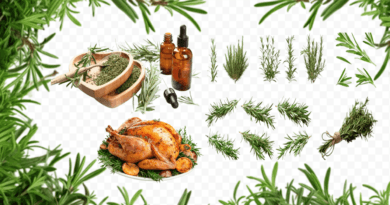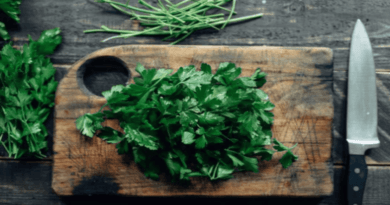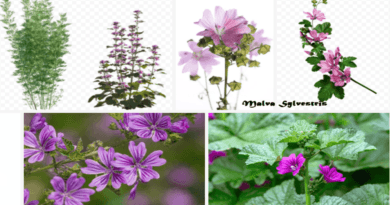Matricaria Chamomilla
A Versatile Herb for Cooking, Medicine, Tea, and Gardening
Matricaria chamomilla, commonly known as German chamomile, stands out as a treasured herb celebrated for its wide range of uses. For centuries, people have turned to this remarkable plant for its culinary, medicinal, and therapeutic benefits. Whether enhancing culinary dishes, providing medicinal relief, brewing calming teas, or enriching your garden, this versatile plant deserves a place in every home. In this article, we will explore how Matricaria chamomilla can seamlessly integrate into cooking, medicine, tea preparation, and gardening practices.
Chamomile in Cooking: Adding Flavor and Aroma
Chamomile offers more than just a pleasing scent; it also enhances the flavor of culinary creations. Its delicate floral notes and mild apple-like flavor make it an excellent addition to both sweet and savory dishes. Chefs and home cooks alike appreciate its versatility in enhancing a variety of recipes.
Fresh or dried chamomile flowers can infuse desserts, syrups, and salad dressings with a unique taste. For example, chamomile-infused honey serves as a delightful topping for pancakes, yogurt, or baked goods. Some chefs add chamomile to sauces or broths to introduce subtle depth and complexity. When paired with citrus fruits or vanilla, chamomile’s flavor profile shines even brighter. To achieve the best results in your cooking, always choose food-grade chamomile flowers. Experimenting with this herb can transform ordinary dishes into extraordinary culinary delights.
Chamomile as a Natural Remedy: Healing Properties
For centuries, people have relied on Matricaria chamomilla as a natural remedy to address various health concerns. Its potent anti-inflammatory, antispasmodic, and calming properties make it an effective herbal solution for several ailments.
Chamomile provides relief for digestive issues, menstrual cramps, and anxiety. Its soothing properties also extend to skincare, where chamomile oil helps alleviate conditions like eczema, rashes, and skin irritations. Additionally, chamomile extract is a key ingredient in many natural sleep aids. Scientists attribute these health benefits to bioactive compounds such as chamazulene and apigenin. These compounds work together to reduce inflammation, ease muscle spasms, and promote relaxation.
However, while chamomile offers numerous health benefits, it’s essential to consult a healthcare professional before using it as a primary treatment for medical conditions. Doing so ensures safe and effective use tailored to individual needs.
Brewing Chamomile Tea: A Timeless Tradition
Chamomile tea remains one of the most beloved herbal infusions across the globe. Its calming effects make it a favorite bedtime beverage, helping millions of people unwind and achieve restful sleep. But its benefits extend beyond relaxation.
Drinking chamomile tea can also soothe digestive discomfort, reduce stress, and ease tension headaches. Preparing chamomile tea is simple and quick. Start by steeping one to two teaspoons of dried chamomile flowers in hot water for about five minutes. Strain the flowers, and if desired, enhance the tea with a drizzle of honey or a splash of lemon juice for added flavor.
Incorporating chamomile tea into your nightly routine can improve sleep quality and reduce nighttime restlessness. Its naturally caffeine-free composition ensures it’s suitable for everyone, including children and those sensitive to stimulants.
Growing Chamomile in Your Garden: A Delightful Addition
Matricaria chamomilla thrives in gardens, offering both beauty and utility. This resilient plant grows well in well-drained soil and under full sunlight. Its small, daisy-like flowers create a charming aesthetic while serving as a natural attraction for pollinators such as bees and butterflies.
Gardeners often use chamomile as a companion plant because it helps improve the health of nearby crops. It deters certain pests while enhancing soil quality. Regular pruning encourages continuous blooms throughout the growing season, ensuring a steady supply of flowers for teas, remedies, and culinary use.
Chamomile adapts well to both garden beds and container gardening, making it suitable for various spaces, including balconies and patios. Whether you’re an experienced gardener or just starting out, chamomile offers an easy-to-grow option with abundant rewards.
Final Thoughts
Matricaria chamomilla stands as more than just a pretty flower. Its culinary versatility, medicinal benefits, soothing tea properties, and gardening value make it an essential herb for every home. Whether you’re crafting a calming tea blend, experimenting with flavorful recipes, addressing health concerns, or beautifying your outdoor space, chamomile delivers unmatched benefits.
By incorporating Matricaria chamomilla into your daily routine, you can enjoy its diverse advantages while embracing a more natural, balanced lifestyle.
References
- McKay, D.L., & Blumberg, J.B. (2006). “A Review of the Bioactivity and Potential Health Benefits of Chamomile Tea.”
- Srivastava, J.K., Shankar, E., & Gupta, S. (2010). “Chamomile: A herbal medicine of the past with bright future.”
- Singh, O., Khan, S.M., & Ahmad, Z. (2011). “Chamomile (Matricaria chamomilla L.): An overview.”




